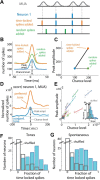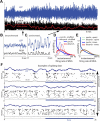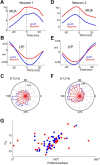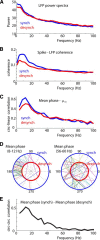Gating of sensory input by spontaneous cortical activity
- PMID: 23345241
- PMCID: PMC3672963
- DOI: 10.1523/JNEUROSCI.2928-12.2013
Gating of sensory input by spontaneous cortical activity
Abstract
The activity of neural populations is determined not only by sensory inputs but also by internally generated patterns. During quiet wakefulness, the brain produces spontaneous firing events that can spread over large areas of cortex and have been suggested to underlie processes such as memory recall and consolidation. Here we demonstrate a different role for spontaneous activity in sensory cortex: gating of sensory inputs. We show that population activity in rat auditory cortex is composed of transient 50-100 ms packets of spiking activity that occur irregularly during silence and sustained tone stimuli, but reliably at tone onset. Population activity within these packets had broadly consistent spatiotemporal structure, but the rate and also precise relative timing of action potentials varied between stimuli. Packet frequency varied with cortical state, with desynchronized state activity consistent with superposition of multiple overlapping packets. We suggest that such packets reflect the sporadic opening of a "gate" that allows auditory cortex to broadcast a representation of external sounds to other brain regions.
Figures











Comment in
-
Sensory processing: a gate for sensory responses.Nat Rev Neurosci. 2013 Mar;14(3):158. doi: 10.1038/nrn3455. Epub 2013 Feb 13. Nat Rev Neurosci. 2013. PMID: 23403745 No abstract available.
References
-
- Battaglia FP, Benchenane K, Sirota A, Pennartz CM, Wiener SI. The hippocampus: hub of brain network communication for memory. Trends Cogn Sci. 2011;15:310–318. - PubMed
-
- Berens P. CircStat: A MATLAB toolbox for circular statistics. J Stat Softw. 2009;31:1–21.
-
- Breiman L. Random forests. Machine Learn. 2001;45:5–32.
Publication types
MeSH terms
Grants and funding
LinkOut - more resources
Full Text Sources
Other Literature Sources
